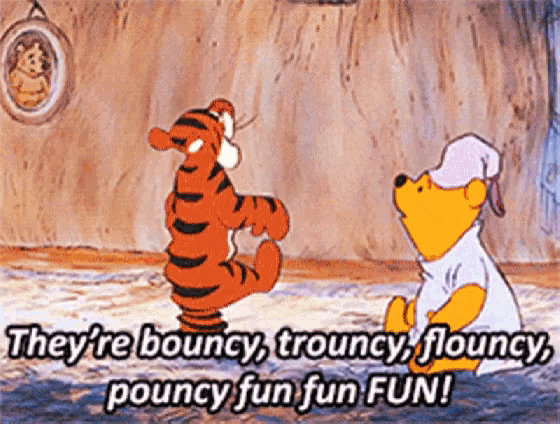10 Ways to Use ChatGPT with Project GLAD®

Teaching is deeply creative work—and also incredibly time-consuming. Preparing chants, writing expert groups, creating pictorial input charts, awards, ELD questions, and frames can take hours of brainstorming, researching, and formatting.
This is where ChatGPT becomes a game-changer.
It is not a replacement for teaching—it's a productivity partner that can help you save prep time, expand your options, and enhance the quality of your instructional tools.
Below is a practical guide for how ChatGPT can support you in designing GLAD® strategies -personalized to your grade level, standards, and classroom needs.
Two hints before we begin:
- ChatGPT works best with very specific prompts. Some of these sample prompts will get you started, but the more specificity you include the more likely it will align with your goal.
- The more you use the tool, the better you (and ChatGPT) will become at streamlining just the right prompt (and product) for your purpose.
We'll start with the most o...
Disciplinary Literacy: Teaching Students to Think Like Experts

Our last issue introduced the Project GLAD® strategy, Directed Reading Thinking Activity or DRTA, to use with whole class reading instruction. This is a little gem of a strategy that can be differentiated with elementary classes but also has great potential in the secondary classroom when our focus is disciplinary literacy.
Disciplinary literacy is the idea that each subject area—like math, science, history, or literature—has its own language, ways of thinking, and methods of communicating. To truly master a subject, students must learn how to read, write, and think like experts in that discipline. It’s not just about content knowledge; it’s about understanding how knowledge is created and communicated within a field.
What Is Disciplinary Literacy?
Unlike general literacy strategies, which apply broadly across content areas, disciplinary literacy focuses on the specific ways reading, writing, and thinking happen within each academic discipline. For example:
A historian reads primar...
The Instructional Level Myth

Have you heard?
The efficacy of teaching reading in small groups with leveled texts is a myth. Students learn just as well or better during whole class instruction using a frustration level text.
This seems to be a fairly new concept in education, but when you dive into the research it suggests the use of instruction using a grade-level or above grade-level text for all students.
For educators, including ourselves, who have advocated for and used homogeneous small group instruction for reading our whole careers this can be a hard pill to swallow! Let’s take a closer look at what research can teach us about small group instruction using leveled readers.
The Misuse of Theory
In his book, Leveled Reading Leveled Lives, Dr. Timothy Shanahan, professor emeritus at the University of Illinois at Chicago, describes what he calls the misuse of theory when we look at the historical research that supposedly advocates the use of dividing students into different leveled reading groups and i...
Cognitive Load

Sometimes interactions we have with students really stick with us, even months or years later. Especially, when we are left wondering how we could have taught differently to make the learning experience more productive, or comprehensible, or just plain better for that student.
I recently had that experience this summer when we facilitated an online training examining GLAD® strategies at the primary level. As I watched the footage of an expert group, I was reminded how that small group and the level of text was too much cognitive load for one of the students. We’ll call her Annie.
The same question is often asked by teachers:
How will my students do with expert text that is too high?
Cognitive Load
The concept of cognitive load is an essential framework in understanding how students process information and why some lessons resonate while others become overwhelming. It refers to the mental effort required to learn something new, and it’s shaped by the complexity of the mate...
We Believe in YOU!

It’s June! The Countdown Is On...
Can you feel it? The final days are here. Whether you’re tallying the moments or soaking them in, one thing is for sure, you've made it!
Our tip this month is simple and sweet.
Before you retreat, pause for a beat.
So much life has unfolded within your classroom walls. Your students have grown — not just academically, but personally. And that's because of you. Not just your lessons, but your laughter, your listening, your love. The way you’ve shown up, day after day, has left a mark.
Your care has been one of the most powerful things they’ve learned this year. And we hope each one of them walks out those doors with this message echoing inside:
"SOMEONE BELIEVES IN ME!"
And dear teacher, we hope you walk out with that same message ringing in your heart because...
WE BELIEVE IN YOU!
So before you close that classroom door, and dash to your car, take a moment to pause for a beat.
🌸 Pause with gratitude — for each student, for ea...
MADly in Love with the Sentence Patterning Chart: A fun and effective extension activity

This month, I had the joy of presenting at WABE (Washington Association for Bilingual Education), where the room was buzzing with passionate and creative educators. Our session? “One Strategy – Endless Possibilities.” And what was our jumping-off point? You guessed it...
The Sentence Patterning Chart (SPC)
For those who’ve had an initial GLAD® training, you know we only have time to scratch the surface of each strategy during those jam-packed days. The SPC is no exception. This year's WABE session was a delightful opportunity to explore meaningful ways for extending the SPC beyond the basics.
Let’s talk about one favorite: an engaging twist on the classic Mad Libs—reimagined for deeper academic value, language development, and laughter-filled learning!
Mad Libs Meets SPC: Language Practice with a Purpose
Instead of passing around a generic Mad Libs booklet, let’s get intentional—and connected to what students are learning in class.
Here’s how to set it up:
1. Choose a Text
...The Rhythm of Spring: What to do with a classroom of "springy" Tiggers!

Spring is here! The days are warmer, the sun is sticking around longer, and your students are likely feeling a little extra springy (Anyone have a class full of Tiggers this spring?) With all that energy bouncing around, it may take some creativity to help your students stay focused.

What if you could channel all that enthusiasm into something productive? Music is a fun and effective way to engage your students, calm their minds, and make learning feel fresh and exciting. Let’s dive into some musical ideas that will turn your classroom into a springtime symphony!
Sounding the Zero Noise Signal
We all know the classic “Hand in the Air - Zero Noise Signal,” but why not mix it up this spring? Instead of the usual silent signal, try using an instrument or sound effect to grab attention. One year, I used a train whistle during a unit on trains. The students loved it! In April, I switched things up with a rainstick. It was perfect for the spring season and provided an opportunity to...
GLAD® and the Science of Reading V: Decoding

There has been a lot of push-back in recent years about the Science of Reading and teaching phonics to English learners.
Not too long ago I attended a bilingual education conference. In one of the plenary sessions, the speaker pronounced that there’s too much emphasis on phonics. “We already know how to do that. There isn’t anybody who’s not teaching phonics!”
I couldn’t disagree more.
There are thousands of teachers, like me, who not only didn’t receive any instruction in our teacher prep programs how to teach foundational reading skills, but also work(ed) in districts who follow outdated models of reading that underemphasize or completely disregard teaching foundational skills. And this has been happening for decades.
I think that the push-back toward the emphasis on phonics instruction is a worry that it will replace or overshadow the other components of literacy and language instruction that multilingual students need.
The detractors of SoR have also spoken out against the va...
GLAD® and the Science of Reading IV: Comprehension (cont.)

Our last issue (https://shorturl.at/RIejJ) focused on a knowledge-based approach to reading comprehension. We discussed the points that building students’ background knowledge and teaching reading through content makes a difference in being able to comprehend a text.
This leads us to the question of what purpose, if any, is there in teaching reading comprehension strategies like summarization, compare/contrast, prediction, and main idea?
Tim Shanahan is the expert we will look to for the answer to this question, and then, of course, we have a GLAD® strategy to share to apply this wisdom.
Comprehension is two-pronged
Shanahan makes a distinction about the cognitive aspects of reading comprehension. He says that we need to be more specific when we talk about the broad topic of reading comprehension. Are we assessing if the student understands what he reads? Or are we asking him to remember or memorize the information to be used later for different activities like writing or discussio...
GLAD® and The Science of Reading III: Comprehension


🤯 Mind blown!
During my research on reading comprehension and how best to teach it I came across a series of podcasts that have changed my view of how best to frame the concept of reading comprehension. What is it? How do we acquire it? Can you teach it?
Dr. Sharon Vaughn is the Executive Director of the Meadows Center for Preventing Educational Risk at the University of Texas at Austin and the lead author of the What Works Clearinghouse Practice Guides.
Vaughn posits that comprehension can’t be taught. Rather, we help build it for students by, first, teaching them how to read the words and knowing what the words mean – phonics + vocabulary. Then, if the student has enough background knowledge of the topic they are reading about, comprehension is the result.
Tim Rasinkski of Kent State University, corroborates this assertion quantitatively, “90% of 3rd-4th graders who have problems with reading comprehension also have problems with phonics, vocabulary, and fluency.”
How a k...


